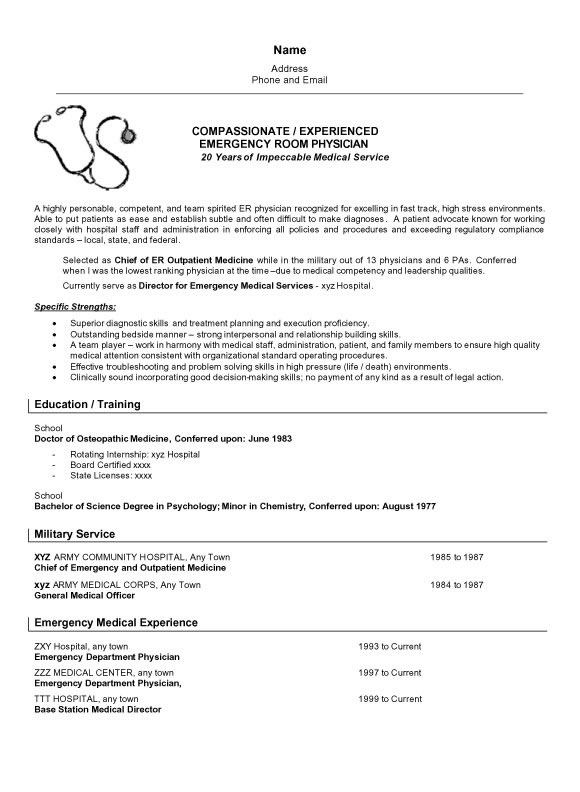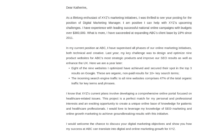Navigating the job market as an emergency medicine physician is a significant undertaking, demanding not just clinical excellence but also a powerful presentation of your professional journey. Your Curriculum Vitae, or CV, is far more than a mere list of past roles; it is your professional narrative, a critical tool that speaks volumes about your skills, experience, and dedication before you even step into an interview. In a field as fast-paced and high-stakes as emergency medicine, a well-structured and compelling CV is your first opportunity to make a lasting impression on prospective employers, showcasing your readiness for the challenging and rewarding work ahead.
This guide is designed to help you construct a CV that truly stands out. While the idea of an emergency medicine physician CV template might sound restrictive, it actually provides a robust framework, ensuring you include all the necessary information in a clear and impactful way. By following a structured approach, you can highlight your unique qualifications, clinical prowess, and commitment to patient care, ultimately paving the way for your next career opportunity. Let us explore the key components that will elevate your application from standard to exceptional.
Crafting Your Emergency Medicine Physician CV: Essential Sections
Building an effective CV for an emergency medicine physician requires a strategic approach, focusing on clarity, comprehensiveness, and impact. Each section serves a distinct purpose, collectively painting a holistic picture of your professional capabilities and achievements. It is crucial to organize these elements logically, ensuring that hiring managers can quickly grasp your qualifications and suitability for the role. Think of your CV as a clinical report, where precision and relevant details are paramount.
Contact Information and Professional Summary
At the very top of your CV, your contact information must be easily visible and accurate. Include your full name, phone number, professional email address, and optionally, a link to your LinkedIn profile. Following this, a compelling professional summary or objective statement is essential. This is your elevator pitch, a concise paragraph (3-5 sentences) that highlights your most relevant skills, years of experience, and career aspirations, specifically tailored to emergency medicine. For instance, you might emphasize your expertise in critical care, trauma management, or your commitment to patient safety and rapid diagnosis in high-pressure environments. This section should immediately capture the reader’s attention and compel them to learn more.
Education and Licensure Details
This section is foundational for any physician’s CV. Begin with your most recent educational achievement and work backward chronologically. Include the name of the institution, location, degree obtained, and dates of attendance or graduation. For emergency medicine, this will typically involve your medical school, residency program, and any fellowships completed. Beyond formal education, your licensure details are critically important. List your current medical licenses, including the state(s) of licensure and license numbers if applicable. Furthermore, clearly state your board certifications, such as those from the American Board of Emergency Medicine (ABEM) or the American Osteopathic Board of Emergency Medicine (AOBEM), along with their dates. This information directly speaks to your qualifications and ability to practice legally and competently.

Beyond these core sections, a robust emergency medicine physician CV template should also incorporate a range of other categories that showcase your complete professional profile. These include:
- Work Experience and Clinical Practice: Detail your past and present roles, specifying your responsibilities, patient volume, and the types of cases you managed. Use action verbs to describe your contributions.
- Certifications and Advanced Life Support: List all relevant certifications such as ACLS Advanced Cardiac Life Support, PALS Pediatric Advanced Life Support, ATLS Advanced Trauma Life Support, and any others pertinent to emergency care.
- Research and Publications: Include any research projects, peer-reviewed articles, presentations, or book chapters you have contributed to.
- Professional Affiliations and Leadership: Mention memberships in professional organizations like ACEP (American College of Emergency Physicians) or SAEM (Society for Academic Emergency Medicine), and any leadership roles held.
- Skills: Highlight both your clinical procedural skills (e.g., intubation, central line insertion, point-of-care ultrasound) and soft skills essential for emergency medicine (e.g., communication, teamwork, crisis management, EMR proficiency).
By meticulously detailing each of these sections, you construct a comprehensive and professional document that effectively communicates your readiness for challenging roles in emergency departments.
Maximizing Impact: Tips for a Standout Emergency Medicine CV
A strong CV does more than just list your credentials; it tells a compelling story of your career progression and capabilities. For an emergency medicine physician, where every moment counts and decisions are critical, your CV needs to reflect your proficiency, resilience, and commitment to patient care. Moving beyond simply filling out an emergency medicine physician CV template, consider how you can infuse your document with elements that truly make it unforgettable to a hiring committee. This involves strategic presentation and content refinement.
One of the most powerful ways to enhance your CV is by quantifying your achievements whenever possible. Instead of just stating “managed patient flow,” consider “managed patient flow for 50+ daily encounters in a Level I trauma center,” or “improved patient throughput by 15% through implementing new triage protocols.” Numbers provide concrete evidence of your impact and efficiency, demonstrating your practical contributions to patient care and departmental operations. This approach resonates strongly with recruiters who are looking for tangible results.
Furthermore, tailor your CV for each specific job application. While an emergency medicine physician CV template provides a solid foundation, generic applications rarely succeed in a competitive market. Carefully read the job description for keywords and desired qualifications, and then subtly integrate them into your CV, particularly in your professional summary and experience sections. This not only shows you have done your homework but also helps your CV pass through Applicant Tracking Systems (ATS), which many healthcare organizations use to filter candidates. Emphasize skills and experiences that directly align with the demands of the specific emergency department you are targeting, whether it is a busy urban trauma center or a more rural community hospital.
Lastly, meticulously proofread your entire CV. Even minor grammatical errors or typos can detract from your professional image and suggest a lack of attention to detail, which is a critical trait for an emergency physician. After countless hours of crafting, it is easy to overlook mistakes. Have a trusted colleague or mentor review your CV for clarity, conciseness, and accuracy. A fresh pair of eyes can spot errors you have missed and provide valuable feedback on how to strengthen your narrative. This final step ensures your CV is polished, professional, and poised to make the best possible impression.
Your CV is your primary advocacy tool in the competitive landscape of emergency medicine. It is a carefully curated document that should evolve with your career, consistently reflecting your most current skills and contributions. By meticulously crafting each section and focusing on demonstrating your practical impact, you present yourself not just as a qualified physician, but as a valuable asset ready to contribute meaningfully to any emergency department.
Ultimately, a well-structured and impactful CV opens doors. It is your opportunity to highlight your unique blend of clinical expertise, leadership qualities, and dedication to patient welfare. Invest the time and effort into creating a document that genuinely represents your professional journey and aspirations, and you will find yourself better positioned to secure the opportunities that align with your career goals.
